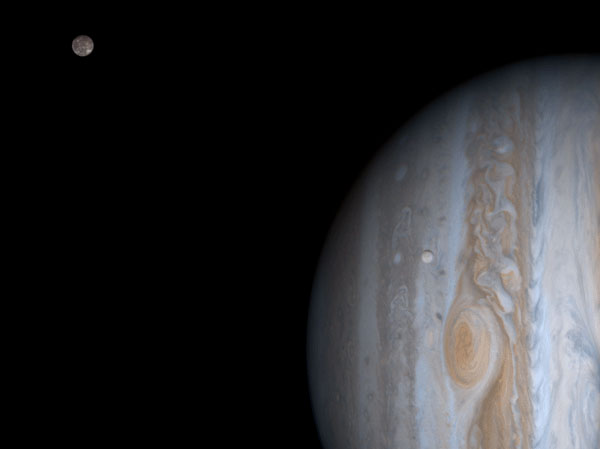Jupiter, Europa, and Callisto

Explanation:
As the
robot Cassini spacecraft rounds
Jupiter on its way toward
Saturn, it has taken a
sequence of images
of the gas giant with its
four largest moons.
Previously released images have highlighted
Ganymede and
Io.
Pictured above are the two remaining
Galilean satellites:
Europa and
Callisto.
Europa is the bright moon superposed near
Jupiter's Great Red Spot,
while Callisto is the dark moon near the frame edge.
Callisto is so dark that it would be hard to see
here if it's brightness was not digitally enhanced.
Recent evidence indicates that both moons hold salt-water seas under surface ice that might be home to extra-terrestrial life.
By noting the times that moons disappeared and
reappeared behind Jupiter in 1676,
Ole Roemer was able to make the
first accurate estimation of the speed of light.
Authors & editors:
Robert Nemiroff
(MTU) &
Jerry Bonnell
(USRA)
NASA Web Site Statements, Warnings,
and Disclaimers
NASA Official: Jay Norris.
Specific
rights apply.
A service of:
LHEA at
NASA /
GSFC
& Michigan Tech. U.

